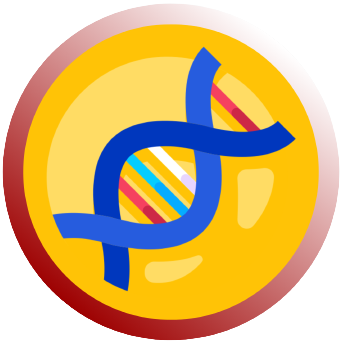Nicol Vaizman—McMaster University Molecular Biology and Genetics 2023
An exciting new area of research in cancer biology has generated a great deal of attention as traditional treatments such as chemotherapy, radiation and surgery have not yet fully eliminated the reappearance of cancerous cells and resistance to drugs. Presently, the scientific field of regenerative medicine is advancing and so, the use of cell therapy has become a backbone in the development of cancer treatments. By doing so, scientists have even considered defining cancer as a stem cell disorder rather than that of abnormal cells dividing uncontrollably. Stem cells are unique in their ability to divide into specialized cells and the stem-cell origin of cancerous cells is due to the acquisition of damaged stem cells.

Cell therapies are designed in such a way that the immune system of a patient is improved and thus, able to fight cancer on its own1. The immune system plays a central role in the body as it recognizes, targets and eliminates any unfamiliar substances to protect the body from disease. However, our own cells are capable of becoming cancerous when gene mutations develop thus, the immune system does not always recognize that they are a threat and need to be destroyed as they contain our own DNA which is recognized as natural and the body’s own tissues2. The spread of cancerous cells into the bone marrow weakens the immune system as less white blood cells are produced to fight infection3.
T cells are a specific type of white blood cell that are essential to the regulatory processes that take place within the body to counteract infections4. These specialized cells have receptors which allow them to attach to surface proteins found on foreign cells called antigens5. The relationship between immune receptors and antigens are analogous to a lock and key because just as every lock can only be opened with a correctly sized key, each foreign antigen has a unique receptor that is able to bind to it. These antigens are also present on cancerous cells but if the immune cells do not have the correct receptors for them, they cannot attach to the antigens and help destroy the cancer cells. This comprehensive knowledge is what led to the discovery of a specific type of immunotherapy as it harnesses the powers of the immune system to attack tumors and ultimately, cure cancer.
Chimeric antigen receptor (CAR) T-cell therapy is the new promising type of immunotherapy as T cells are genetically altered to better find antigens on the surface of cancerous cells and destroy them. Through a procedure called leukapheresis, T cells are removed and separated from the patient’s bloodstream through an IV and then sent to a lab6. Chimeric antigen receptors are then engineered into the T cells through an inactive virus in order to make them stick to cancer cells. When these new cells multiply, they are ready to be infused back into the patient’s bloodstream and can now precisely attack the tumor by releasing toxins7. As different types of cancers have various antigens, CAR T-cells are specific to the disease that the patient is fighting. By doing so, this cell therapy can eradicate all cancerous cells and remain in the body to ensure long-term remission for the patient.
The delivery of anti-cancer agents such as CAR T-cells has had large success rates for cancers such as leukemia and lymphoma, as a 30-40% success rate for lasting remission with no additional treatment has been noted8. As larger sample sizes and longer time periods of remission are analyzed, this type of cell therapy is being further developed to treat solid tumors such as those found in breast and lung cancer. Therapeutic systems are constantly being designed in the overall aim to improve the outcome in the fight against cancer.
References
1 Cancer Treatments: The Newest Tools Doctors Are Using To Fight This Disease [Internet]. WebMD. WebMD; 2020 [cited 2021Feb19]. Available from: https://www.webmd.com/cancer/cancer-new-research-treatment
2 The immune system – Canadian Cancer Society [Internet]. http://www.cancer.ca. [cited 2021Feb19]. Available from: https://www.cancer.ca/en/cancer-information/cancer-101/what-is-cancer/the-immune-system/
3 The immune system – Canadian Cancer Society [Internet]. http://www.cancer.ca. [cited 2021Feb19]. Available from: https://www.cancer.ca/en/cancer-information/cancer-101/what-is-cancer/the-immune-system/
4 CAR T-cell therapy [Internet]. Cleveland Clinic. [cited 2021Feb19]. Available from: https://my.clevelandclinic.org/health/treatments/17726-car-t-cell-therapy
5 CAR T-cell therapy [Internet]. Cleveland Clinic. [cited 2021Feb19]. Available from: https://my.clevelandclinic.org/health/treatments/17726-car-t-cell-therapy
6 LaRussaA. Chimeric Antigen Receptor (CAR) T-Cell Therapy [Internet]. Chimeric Antigen Receptor (CAR) T-Cell Therapy | Leukemia and Lymphoma Society. 2015 [cited 2021Feb19]. Available from: https://www.lls.org/treatment/types-of-treatment/immunotherapy/chimeric-antigen-receptor-car-t-cell-therapy
7 Watson S. CAR T-Cell Therapy: What You Should Know Today [Internet]. WebMD. WebMD; 2021 [cited 2021Feb19]. Available from: https://www.webmd.com/cancer/lymphoma/features/car-t-gene-therapy-risks-benefits#
8 Bartosch J. Three years after CAR T-cell therapy for lymphoma, patient still cancer-free [Internet]. UChicago Medicine. UChicago Medicine; 2019 [cited 2021Apr2]. Available from: https://www.uchicagomedicine.org/forefront/cancer-articles/a-walking-miracle-car-t-cell-therapy


One reply on “Cell Therapies for Cancer Treatment: How it Works”
Really fun learning about this!
LikeLike